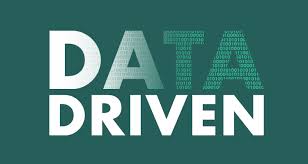Data for Public Health Solutions: A Critical Approach to Improving Population Health
Dr. Alamou Sanoussi
3/20/20214 min read


Introduction to Data-Driven Public Health
In today's rapidly evolving healthcare landscape, data has emerged as a cornerstone in the quest to improve population health. The concept of data-driven decision-making underscores the pivotal role that data collection, analysis, and interpretation play in understanding and addressing public health issues. By leveraging data, public health professionals can gain critical insights into the dynamics of population health, enabling them to formulate and implement effective health interventions.
Data collection in public health is a multifaceted process that draws from various sources. Healthcare providers contribute valuable clinical data, which can indicate trends in disease prevalence and treatment outcomes. Public health agencies, on the other hand, offer a breadth of epidemiological data, which is essential for tracking the spread of diseases and identifying at-risk populations. Community surveys provide another layer of information, capturing health behaviors, social determinants of health, and other factors that influence overall well-being.
These diverse data sources collectively contribute to a comprehensive understanding of health trends, disease prevalence, and risk factors. For instance, data from healthcare providers can reveal patterns in chronic disease management, while public health agency data can highlight emerging infectious disease threats. Community surveys can unearth insights into health disparities and the impact of socio-economic factors on health outcomes. By integrating these data streams, public health professionals can construct a holistic view of population health, informing policy decisions and resource allocation.
Moreover, the advent of advanced data analytics tools has revolutionized the way public health data is processed and interpreted. Machine learning algorithms, predictive modeling, and geographic information systems (GIS) are just a few examples of technologies that enhance the ability to analyze complex data sets. These tools enable public health experts to identify trends, predict future health challenges, and tailor interventions to the specific needs of communities.
Ultimately, data-driven public health initiatives hold the promise of more precise, targeted, and effective health interventions. By harnessing the power of data, public health professionals can not only respond to current health issues but also anticipate and mitigate future challenges, thereby improving population health outcomes on a broad scale.
Applications of Data in Public Health Interventions
Data plays a pivotal role in public health interventions, serving as the backbone for identifying health disparities, targeting high-risk populations, and designing effective strategies. By analyzing comprehensive datasets, public health professionals can pinpoint specific communities that are disproportionately affected by certain health conditions. This targeted approach enables more precise intervention, ensuring that resources are allocated efficiently and effectively.
One of the most significant applications of data in public health is tracking disease outbreaks. Through the collection and analysis of real-time data, health authorities can detect emerging patterns and potential hotspots. For instance, during the COVID-19 pandemic, data-driven approaches were crucial in understanding transmission dynamics, informing public health guidelines, and implementing lockdown measures. These insights not only helped in controlling the spread of the virus but also in planning vaccination campaigns and monitoring their success.
Moreover, data is instrumental in monitoring the effectiveness of public health interventions. By continuously evaluating the outcomes of implemented strategies, public health officials can determine what works and what doesn't. This iterative process of assessment and adjustment enhances the overall impact of health programs. For example, data on vaccination rates, infection rates, and patient recoveries provide a clear picture of the intervention's success, guiding future actions.
Evaluating public health policies also heavily relies on data. Policymakers use data to assess the impact of regulations and initiatives on population health. For example, data on smoking prevalence before and after the implementation of tobacco control policies can reveal their effectiveness in reducing smoking rates and related health issues. This evidence-based approach ensures that policies are grounded in real-world outcomes and can be adjusted as necessary.
Additionally, data aids in prioritizing resources and efforts to maximize health outcomes. By identifying the most pressing public health issues and the populations most in need, resources can be directed where they will have the greatest impact. This strategic allocation is crucial, especially in resource-limited settings, to achieve optimal health benefits.
Challenges and Future Directions in Public Health Data Utilization
Harnessing data for public health purposes presents several significant challenges. One of the foremost issues is data privacy. Protecting sensitive health information while enabling its use for public health initiatives requires stringent regulatory frameworks and advanced security measures. Balancing transparency with confidentiality remains a critical concern, as any breach can undermine public trust and compromise individual privacy.
Data quality is another critical challenge. Inconsistent data collection methods and varied data sources often result in incomplete or inaccurate datasets, which can skew public health insights and decision-making. Ensuring high-quality data necessitates the adoption of standardized collection methods and robust validation processes. This standardization is essential for making reliable comparisons and conducting longitudinal studies.
Cross-sector collaboration is crucial for overcoming these challenges and achieving a holistic view of public health. Integrating data from diverse sources such as healthcare providers, social services, and environmental agencies can provide a more comprehensive picture of population health. Such collaboration requires coordinated efforts and shared goals among different stakeholders, including public health officials, policymakers, and private sector partners.
Looking ahead, advancements in data analytics and machine learning offer promising future directions for public health data utilization. These technologies can analyze vast amounts of data quickly and accurately, identifying patterns and predicting trends that can inform proactive public health strategies. Moreover, real-time data monitoring can enhance the responsiveness of public health systems, allowing for timely interventions during outbreaks or other health emergencies.
Innovations in data utilization also include the development of interoperable health information systems, which enable seamless data sharing across platforms and institutions. Such systems can facilitate better coordination of care and more effective public health responses. As these technologies evolve, they hold the potential to significantly improve public health decision-making and outcomes, ultimately leading to healthier populations.
